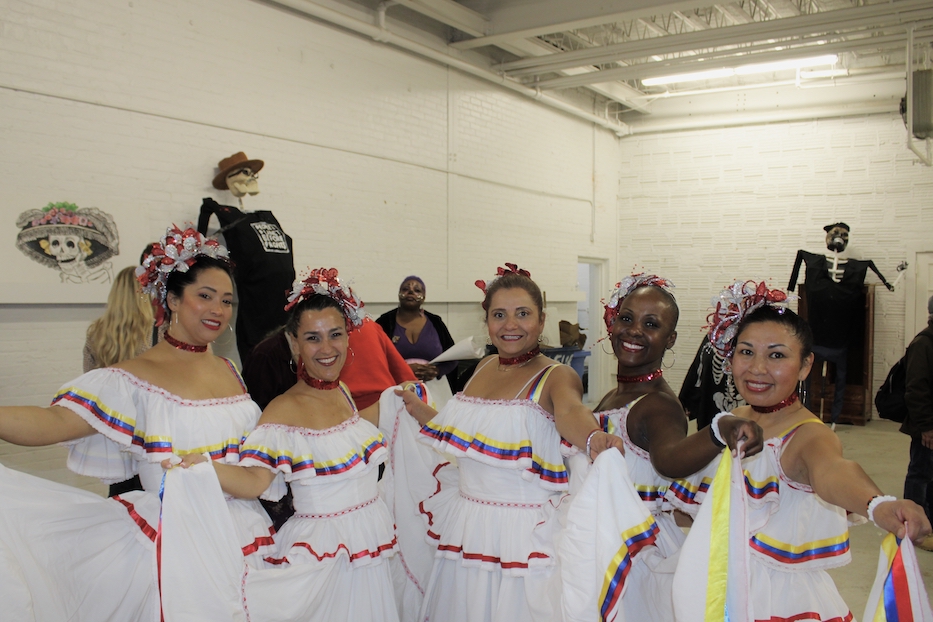
Culture & Community | Dia de los Muertos | Fair Haven | Arts & Culture | Unidad Latina en Acción | Arts & Anti-racism
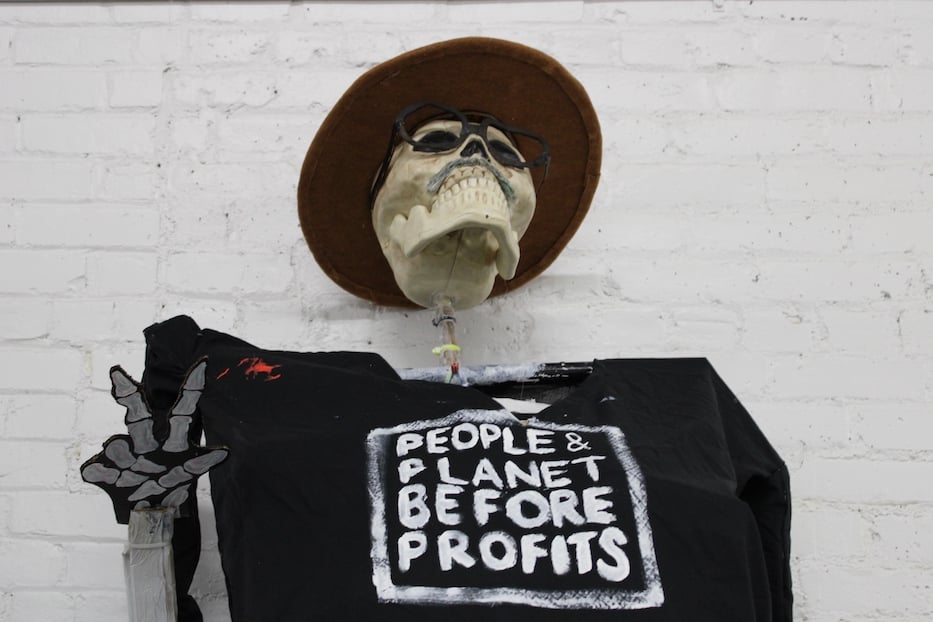
A giant puppet celebrating Art Perlo, who passed last year at 74 years old. Saturday, his wife Joelle Fishman honored his legacy. Idalys Torres Photos.
Joelle Fishman and Pedro Lopez looked up at a massive skeleton that towered above their heads. Beneath a wide-brimmed hat, a pair of thick-rimmed black glasses surrounded two skeletal eye sockets, curious as ever. Over a wide, toothy smile, a gray mustache tickled at a bony upper lip. The figure raised his right hand and made a peace sign. People & Planet Before Profits, read a message on his shirt.
“Tonight, we’re walking with you, Art,” said Fishman. In her voice was not just decades of shared memories, but a belief that the world he envisioned was still possible.
Saturday night, immigrant rights activists, musicians, and revelers gathered for Unidad Latina en Accíon’s 12th annual Día de los Muertos parade, an annual tradition that has withstood two years of pandemic interventions to keep going in the heart of Fair Haven. Held this year in an old warehouse at 26 Mill St., the hours-long observance paid homage to both migrants who have perished and New Haven activists George Edwards, Art Perlo, and Robin Latta. For the first time, ULA held a sort of preview with artists from Tlaxcala on the New Haven Green last Thursday. Read about that here.
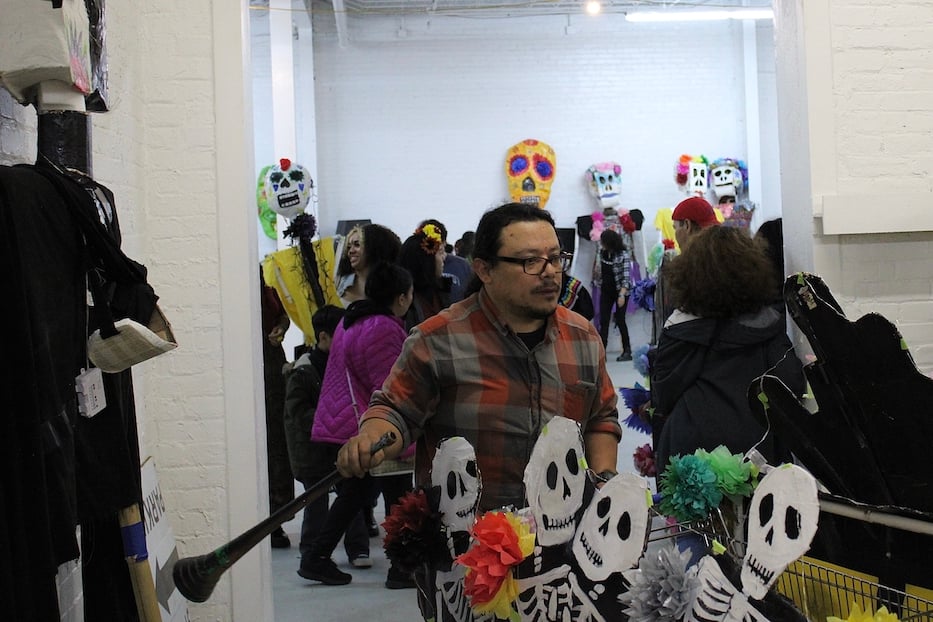
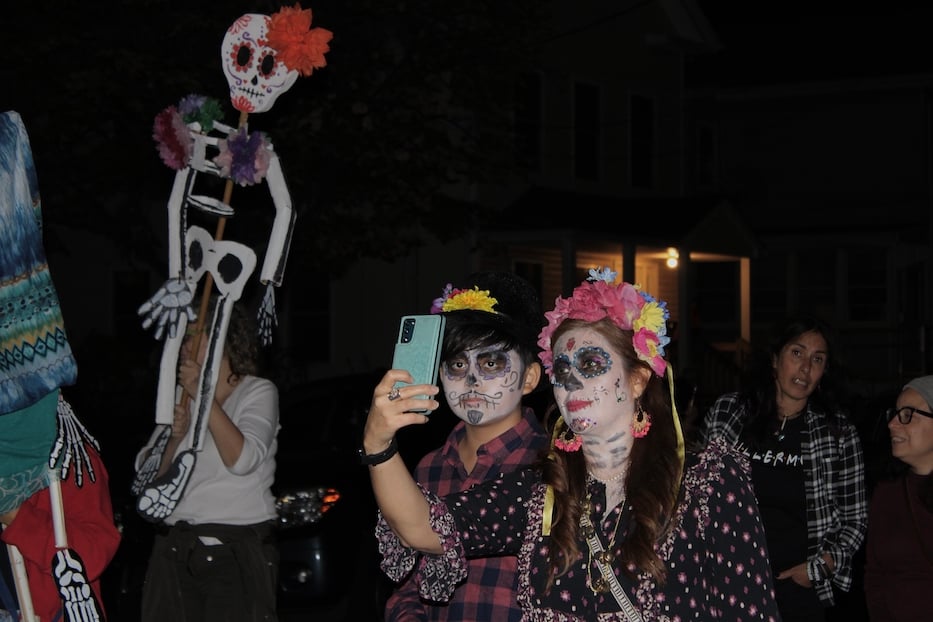
Idalys Torres Photos.
“Our cultures are of living memories, of ancestral memories,” said Guatemalan artist Pedro Lopez, who has worked for years with ULA before the parade. “In every moment of our lives, our ancestors are present. They are remembered with affection, with love, with joy, and with sadness in many moments, because we come from their blood, we come from their history.”
The choice to honor artists, activists and migrants comes at a critical time for the fight for immigrant justice and against a rise in fascism worldwide. This fiscal year alone, over 800 migrants have died trying to cross the U.S.-Mexico Border, U.S. Customs and Border Patrol reported earlier this year. They join almost 10,000 recorded deaths in the last 25 years, the number of which is likely much higher. While President Joe Biden has promised to amend the current immigration system, reforms have not come, and migrants keep dying.
New Haven has also lost three of its social justice heroes in the past year. Last October, Latta —known for a sign she brought everywhere that read No Human Is Illegal—died after a battle with ovarian cancer. That December, Perlo passed away at 74 years old after a diagnosis of bladder cancer. Then in September of this year, Black Panther George Edwards died of kidney cancer at 85. In the months since their deaths, the living have worked to keep them close—in their own activism, in their stories, in memorial services filled with music and memory.
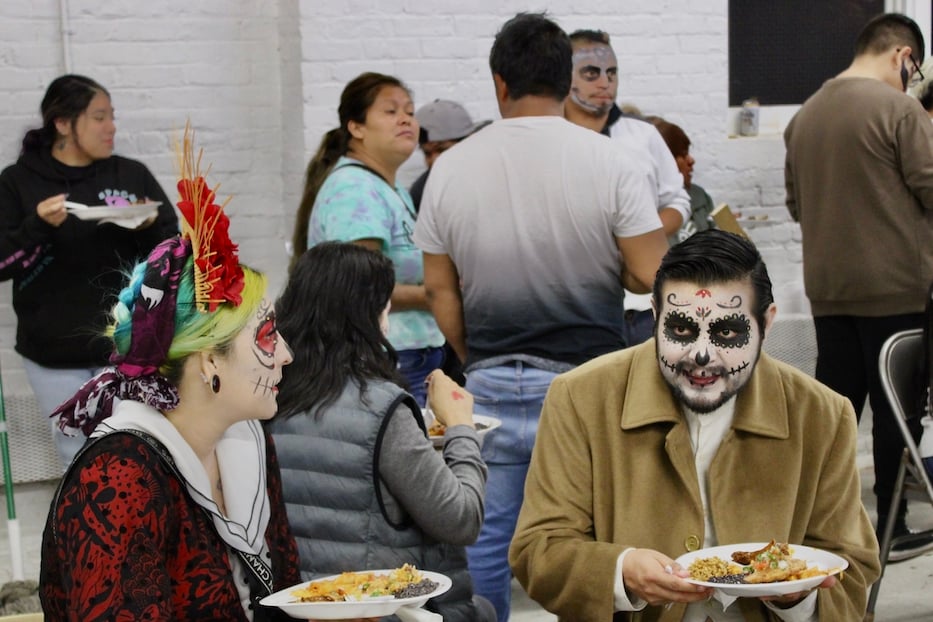
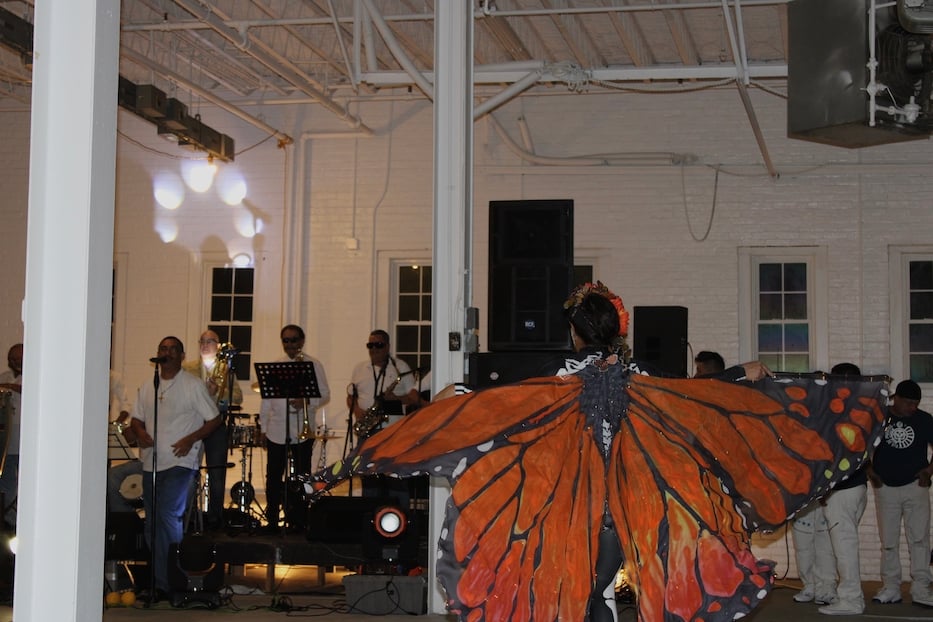
Idalys Torres Photos.
Inside Mill Street, those memories took the form of skeletons, giant puppets, music, face painting and a community ofrenda, or memorial altar that the group sets up each year. During Día de los Muertos—which technically takes place Nov. 1 and 2—it is thought that the spirits of the dead are able to cross back over into the world of the living for a single day, and spend it among their relatives. People put food, drinks, and flowers on their altars to welcome them back. As flames danced on the altar, a bowl of apples caught in the light, stacked beside two small loaves of pan de muerto.
“It's a remembrance,” Lopez said. “Our belief is that when you stop thinking about your ancestors, they are forgotten and they disappear completely, and you lose part of the cultural and family legacy.”
Around the warehouse, reminders of the dead floated through the world of the living. Humans, dressed in wings, became larger-than-life butterflies. Figures from La Bestia looked out with their toothy smiles, exposed ribcages and bony hands. Nearby, a new catrina stood out in a black, white, and orange skirt made entirely out of tissue paper and newspaper. On her head, butterflies and pipe cleaner worms sprang from a hat with orange tissue paper, cut and layered to look like marigold flowers. A fan made with plastic spoons completed the outfit.
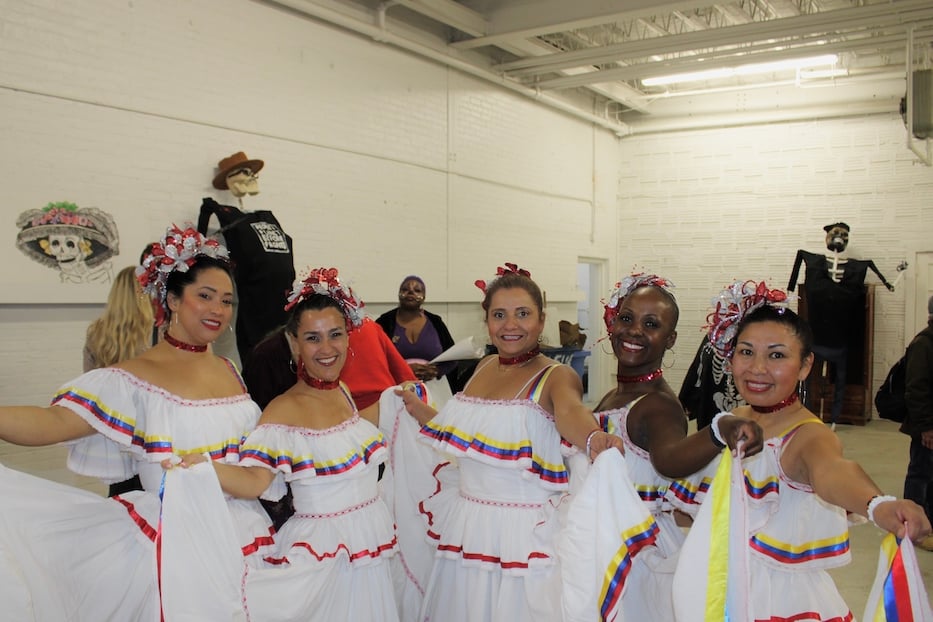
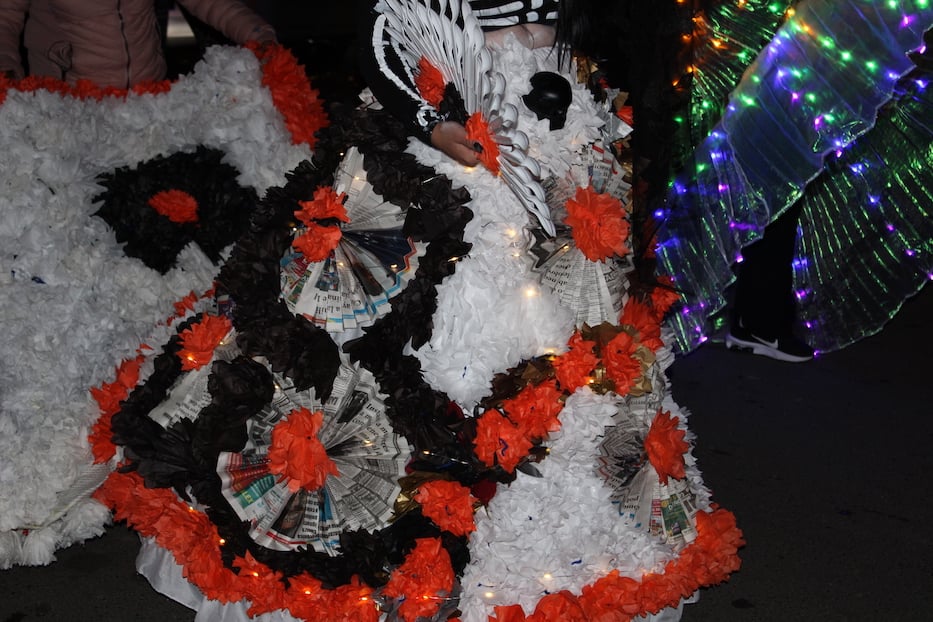
Idalys Torres Photos.
Nearby, a spectral Perlo rose toward the warehouse’s high ceiling, some volunteers stopping by to say hellp. On his shirt, volunteers had written a simple, moving message in thick white paint: People & Planet Before Profits. Standing close to the work, Fishman said she was there to honor her late husband’s legacy. Saturday, she carried with her not just the almost five decades they shared together in New Haven, but memories of Perlo, who became known for his wide-brimmed hats, swooping mustache, and love for a good graphic t-shirt.
“Art never left the house without a message on his shirt,” said Fishman, who chairs the Connecticut Communist Party USA. His legacy continues in not just an online archive of his work, but the generations of young leaders he trained. Both Lopez and Fishman, who called him a “walking library” while working on the design with ULA, pointed to the eagerness with which he would offer up the New Haven People’s Center as a space for the group.
With the support of activists like Perlo, ULA has been defending the human rights of immigrants and workers for 20 years now. Lopez spoke of hundreds of migrants who’ve come to them for help—and helped the group prepare for festivals and events as a way to show their thanks in return. He recalled multiple grassroots protests against wage theft and for more equitable pay that the organization has spearheaded with its members.
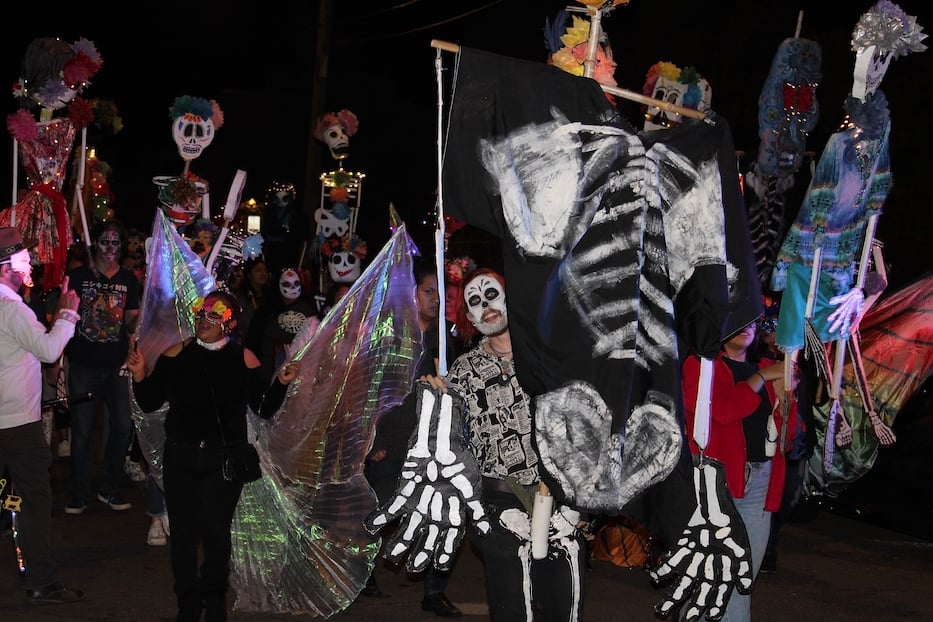
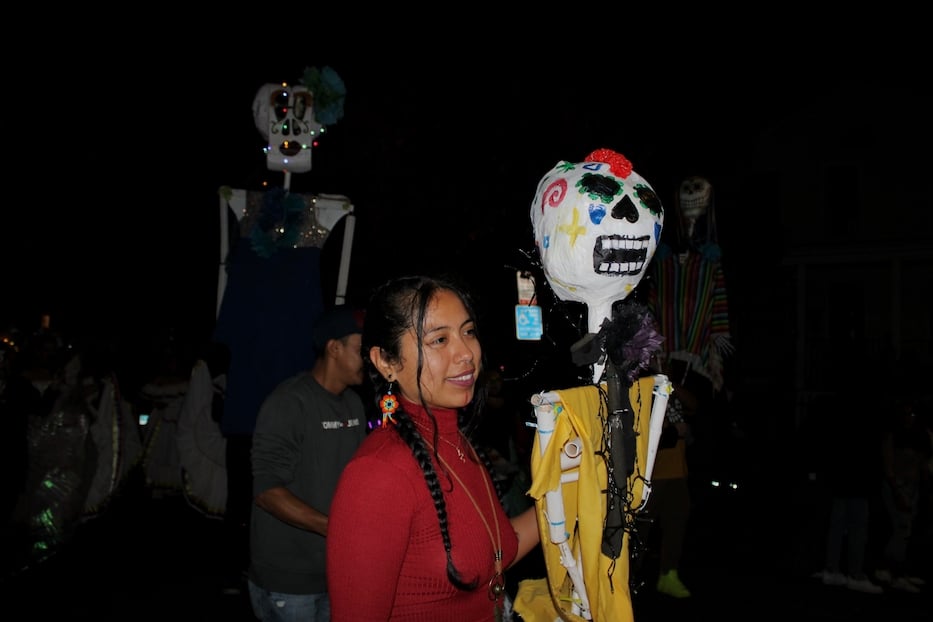
Idalys Torres Photos.
“We have the support from recently arrived families and above all we hope to maintain that culture, identity and union of the community,” he said.
As 6 p.m. drew near, attendees lined up, spilling out onto Mill Street with painted white faces, swishy skirts, and dresses made of bright recycled material. Rubi Dorantes, a New Haven resident, talked about how she loved how generous the volunteers were. She noted that many seemed committed to the celebration.
As dusk fell, people started to grab puppets, eager for the parade to start. Music and dancing filled the air, smiles multiplying down Mill Street. People took out their phones to record and document the memories that the community was making. As music sounded over the street, the group made its way toward Grand Avenue, making its way down the neighborhood’s main corridor before turning back to the warehouse for an hours-long fiesta. While pre-pandemic celebrations normally terminated at Bregamos Community Theatre, there was a second Día de los Muertos event from the Semilla Collective in that space Saturday.
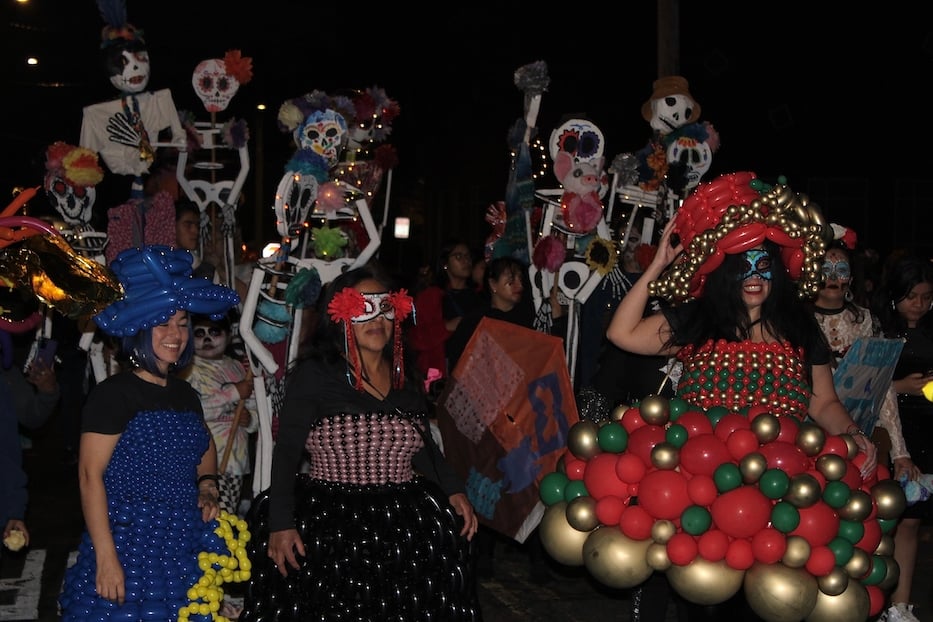
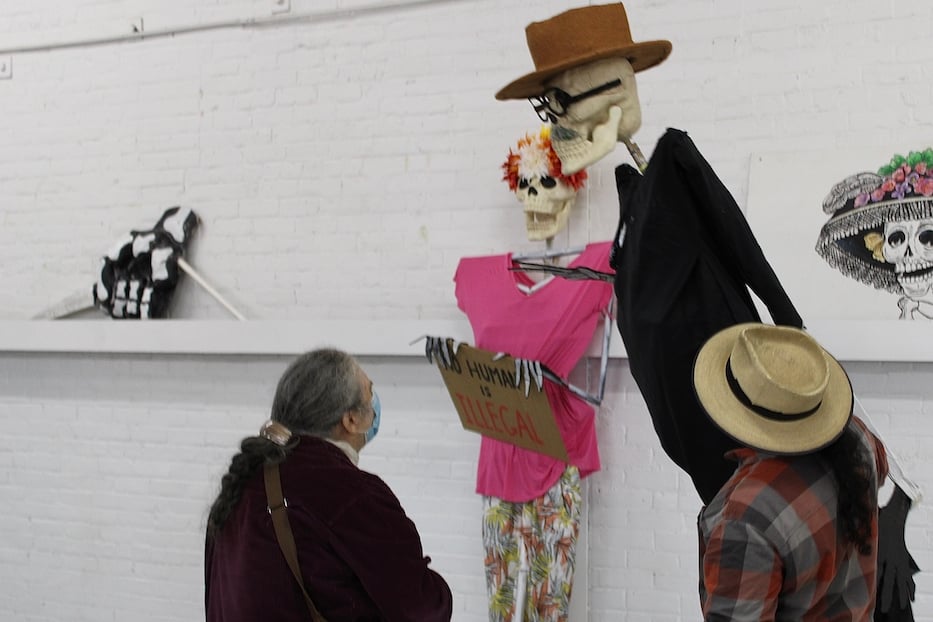
Idalys Torres Photos. At the bottom are Fishman and Lopez.
After the parade had ended, The party was only beginning back at the Mill St. warehouse. People sat back, enjoyed the music, and had a good time eating the free food that was offered to the community. Cumbias, Mariachi and salsa were playing in the background, as kids drew pictures on the floor to occupy themselves. The community had come together yet again.
“This year's festival exceeded our expectations,” Lopez said on Tuesday, answering questions in Spanish that Megan Fountain translated. “The turnout was massive. We were able to reach more people. Many people came who had not been back for years, and new people came. New artistic groups joined us to add color, joy and their special touch.
“And above all, the parade makes visible Indigenous peoples’ culture, and the cultures of the entire American continent. As I have always said: Migrants are not only a labor force, they are not only workers, but they are the important part that moves this city and the country culturally and economically.”
Lucy Gellman contributed reporting. Endless thanks to longtime ULA organizer Megan Fountain, who provided translation assistance on a second interview with artist Pedro Lopez.

